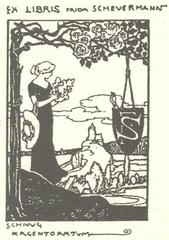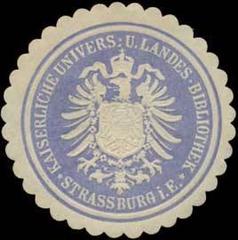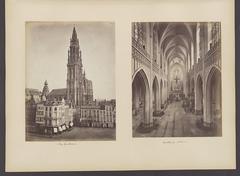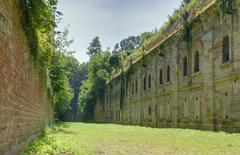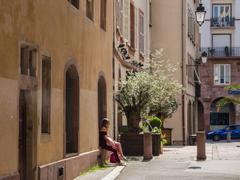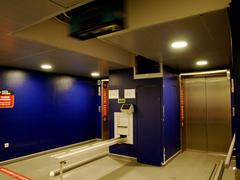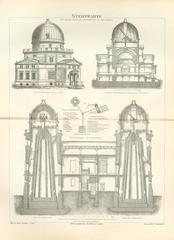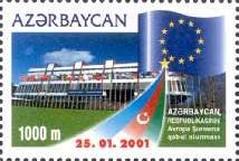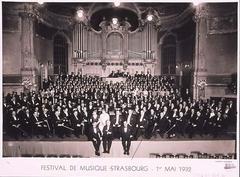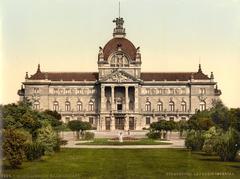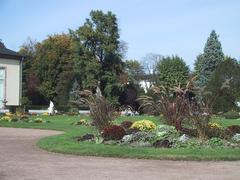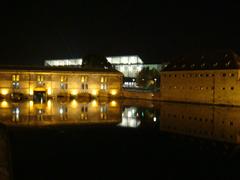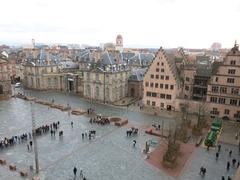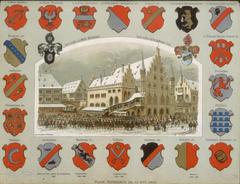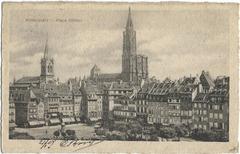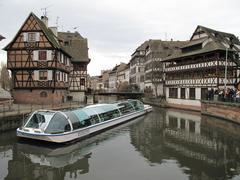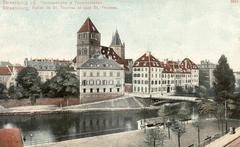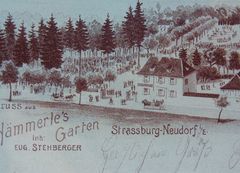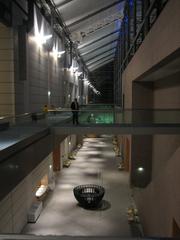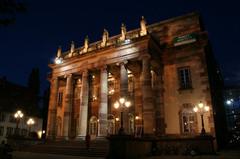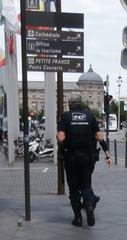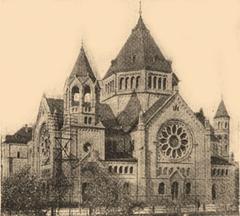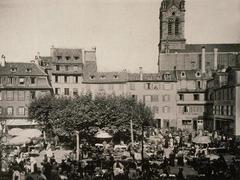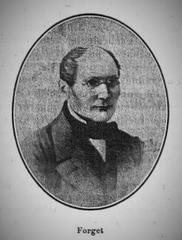Musée des Arts Décoratifs de Strasbourg: Visiting Hours, Tickets, and Comprehensive Guide to Strasbourg’s Historical Sites
Date: 15/06/2025
Introduction
Nestled in the heart of Strasbourg’s historic center, within the resplendent Palais Rohan, the Musée des Arts Décoratifs de Strasbourg invites visitors on an immersive journey through the city’s decorative arts heritage from the 17th to the 19th centuries. Renowned for its exceptional collections—ranging from porcelain and furniture to gold- and silversmithing and mechanical toys—this museum not only showcases Strasbourg’s artistic evolution but also preserves the grandeur of an 18th-century Baroque palace. With its central location near Strasbourg Cathedral and other landmarks, it is an essential stop for art lovers, history buffs, and travelers eager to explore the region’s Franco-Germanic legacy (strasbourg.eu; en.wikipedia.org).
Table of Contents
- Introduction
- The Significance of Palais Rohan and the Museum’s Setting
- Historical Evolution and Restoration
- Collections and Thematic Highlights
- Visiting Hours, Tickets, and Accessibility
- Guided Tours, Events, and Visitor Engagement
- Multimedia Resources and Planning Tools
- Nearby Strasbourg Historical Sites
- Frequently Asked Questions (FAQ)
- Conclusion and Visitor Recommendations
- References
The Significance of Palais Rohan and the Museum’s Setting
The Musée des Arts Décoratifs is housed on the ground floor of the Palais Rohan, a masterpiece of French Baroque architecture constructed between 1732 and 1742 by Robert de Cotte, chief architect to King Louis XV. Originally the residence of Strasbourg’s prince-bishops and cardinals of the Rohan family, the palace stands as a testament to the city’s political and ecclesiastical power during the Ancien Régime. Its opulent apartments, grand ceremonial halls, and private chambers—richly adorned with Gobelins tapestries, intricate stuccowork, and chinoiserie—have been meticulously restored, offering a rare glimpse into the lifestyles of Strasbourg’s aristocracy (en.wikipedia.org; my-weekend-in-alsace.com).
Strategically positioned on Place du Château and facing Strasbourg Cathedral, the palace forms a dramatic architectural ensemble, blending Baroque and Gothic influences. The building’s symmetrical façade, grand pediments, and elegant limestone exterior reflect the height of 18th-century Parisian sophistication, while its interior spaces provide the ideal setting for the museum’s collections (strasbourg.eu).
Historical Evolution and Restoration
Strasbourg’s location on the Franco-German border has left its mark on both the city and the Palais Rohan. The palace endured significant damage during Allied bombing in August 1944, prompting decades-long restoration efforts that have returned its rooms and decorative elements to their former glory. Since 1920, the building has been protected as a Monument historique, underscoring its national and regional importance (en.wikipedia.org; jds.fr).
The museum’s collections, displayed within these historic rooms, trace the development of Strasbourg’s decorative arts from its 1681 annexation by France through the cultural efflorescence of the Second French Empire. This period saw the flourishing of local craftsmanship, marked by a distinctive blend of French elegance and German precision.
Collections and Thematic Highlights
Ceramics and Porcelain
A highlight of the museum is the renowned Hannong faience collection, featuring over 200 pieces crafted by the pioneering Hannong family. Their innovative polychrome techniques and distinctive cobalt-blue floral motifs made Strasbourg a center of European porcelain production. The collection includes tableware, figurines, and decorative objects, complemented by pieces from Sèvres and Meissen (en.wikipedia.org; Musées de Strasbourg).
Goldsmithery and Silverware
Strasbourg’s tradition of gold- and silversmithing is represented through religious vessels, tableware, and personal adornments produced by celebrated artisans such as the Imlin and Kirstein families. The collection includes liturgical objects—chalices, reliquaries, and ceremonial silverware—demonstrating both technical mastery and artistic flair.
Furniture and Woodwork
The museum offers a comprehensive survey of 18th- and 19th-century furniture, including Rococo and Neoclassical commodes, Boulle marquetry armoires, and original pieces owned by the Rohan family. These works highlight the evolution of interior design trends and the craftsmanship of regional cabinetmakers.
Clocks and Scientific Instruments
Strasbourg’s horological expertise is celebrated through clocks related to the Strasbourg Cathedral astronomical clock, as well as precision instruments crafted by local artisans. The museum also preserves original elements from the first astronomical clock, including a renowned mechanical cock—one of the world’s oldest automata (Strasbourg Cathedral Clock).
Textiles and Tapestries
Tapestries from the 17th and 18th centuries depict mythological and pastoral scenes, while regional costumes, ecclesiastical vestments, and embroidered linens reflect the rich textile traditions of Alsace.
Mechanical Toys and Astronomical Clock Elements
A selection of mechanical toys, including items from the Tomi Ungerer Foundation, illustrates the evolution of play and regional ingenuity. Elements from Strasbourg Cathedral’s famous astronomical clock underscore the city’s contributions to science and technology (dabblinginjetlag.com).
Visiting Hours, Tickets, and Accessibility
Opening Hours:
- Open daily except Tuesday.
- Weekdays: 10:00–13:00 and 14:00–18:00.
- Weekends: 10:00–18:00.
- Closed: 1 January, Good Friday, 1 May, 1 and 11 November, 25 December.
Tickets:
- Full price: €7.50
- Reduced price: €3.50 (students, seniors)
- Children under 18: Free
- Strasbourg City Card: Discounted admission to multiple museums
Tickets can be purchased online or at the museum entrance. Combined tickets are available for all three Palais Rohan museums (Decorative Arts, Fine Arts, Archaeology), offering excellent value (official museum website).
Accessibility:
- Physical: Due to the palace’s historic structure, the museum is not fully wheelchair accessible—there are no elevators or ramps for certain thresholds.
- Hearing: The ticket office is equipped with a magnetic induction loop for visitors with hearing aids.
- Visual/Cognitive: No tactile guides or Braille signage are currently available; visitors with specific needs should contact the museum in advance.
See the accessibility page for details.
Guided Tours, Events, and Visitor Engagement
The museum offers a variety of ways to engage:
- Self-guided visits with printed guides in multiple languages.
- Guided tours (in French and occasionally English) provide expert commentary on the collections and the history of Palais Rohan.
- Educational workshops and discovery trails are available for school groups and families (Musées de Strasbourg).
Special exhibitions and cultural events are held throughout the year, often in collaboration with European institutions. From March 31 to July 2, 2025, certain galleries (including the silverware and clock galleries, one faience room, and the Tomi Ungerer toy collection) will be closed for renovation. Always check current gallery availability before your visit.
Multimedia Resources and Planning Tools
Enhance your experience with:
- Audio guides and digital resources offering detailed object descriptions.
- Virtual tours and interactive maps on the museum’s website for pre-visit planning.
- High-quality images featuring alt text such as “Palais Rohan interior at Musée des Arts Décoratifs de Strasbourg” and “Hannong ceramics collection.”
Nearby Strasbourg Historical Sites
The museum’s central location makes it easy to pair your visit with other attractions:
- Strasbourg Cathedral
- Musée de l’Œuvre Notre-Dame
- Alsatian Museum
- Fine Arts Museum
- Archaeological Museum
Public transport and parking are close by, and the district offers numerous cafés and shops for a full day of exploration (Visit Strasbourg).
Frequently Asked Questions (FAQ)
Q: What are the visiting hours?
A: Open daily except Tuesday; hours vary by weekday and weekend. Check the official website for updates.
Q: How do I buy tickets?
A: Purchase online or at the entrance. Combined and discounted tickets are available.
Q: Is the museum wheelchair accessible?
A: No, due to the historic structure, full accessibility is not possible.
Q: Are guided tours available?
A: Yes, in French and occasionally English. Booking in advance is recommended.
Q: Can I take photos?
A: Non-flash photography is allowed in most areas; respect posted policies.
For more FAQs, visit the museum’s information page.
Conclusion and Visitor Recommendations
The Musée des Arts Décoratifs de Strasbourg stands as a cultural landmark, combining the splendor of Palais Rohan’s Baroque interiors with a world-class decorative arts collection. Whether you are a history enthusiast, artistic explorer, or casual traveler, the museum offers a rich, multidimensional perspective on Strasbourg’s heritage.
Tips for Your Visit:
- Check current opening hours and gallery closures before arrival.
- Take advantage of guided tours for deeper insight.
- Pair your visit with nearby historical sites for a complete Strasbourg experience.
- Consider the Strasbourg City Card for savings if visiting multiple museums.
- Download the Audiala app for interactive guides and real-time updates.
For up-to-date information, exhibition news, and visitor resources, consult the official museum website and follow the museum’s social media channels.
References and Further Reading
- This is a sample text. (strasbourg.eu)
- This is a sample text. (my-weekend-in-alsace.com)
- This is a sample text. (en.wikipedia.org)
- This is a sample text. (jds.fr)
- This is a sample text. (dabblinginjetlag.com)
- This is a sample text. (en.wikipedia.org)
